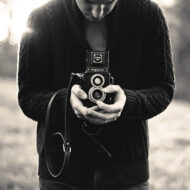How to Shade When Drawing
Knowing how to shade when drawing is important if you want your artwork to look believable. What types of shadows are there? Where do shadows fall?
First, let’s discuss the anatomy of highlights and shadows. There are five basic types:
- The highlight is the brightest point of light that falls on an object.
- Form shadow. The shadows begin and grow darker as the form of the object moves away from the light source. This will be a gradation of shadow from the lightest shadow to the darkest, which is known as…
- Core shadow. This is the darkest portion of the shadow and is opposite the light source.
- Cast shadow. This is the shadow cast by the object onto the surface it’s sitting on or on a surface behind the object.
- Reflected light. Because your object is sitting on a tabletop, for example. The light hits the object, but also the tabletop. The surface of the table reflects light back up at the bottom of your object causing a reflected light.
In the image above with the sphere, we see the light source to the upper right. The highlight on the sphere should fall in the upper right side where the most direct light hits. As the shape of the sphere curves away from the light source, shadows start to form. The form shadow consists of a range of greys and eventually leads to the darkest shadow, which is the core shadow. The core shadow is darkest because it is the furthest away from the light source. Keep in mind that unless your object is in very dim lighting, the core shadow is rarely a pure black. As we pass the core shadow, you’ll again have a gradation as the form shadow continues.
Now we come to the cast shadow. This is the shadow that the object casts on surfaces around it, in this case the ‘table’ it’s sitting on. At this point, our attention is brought to an often-overlooked detail. The table also receives light from the light source and reflects light back up to the bottom of the sphere. This is the reflected light.
How do you figure out where the shadows go?
In this image with the cube, we have the light source coming from the upper left. This is a bit of a perspective lesson. In this case, the cube is sitting with one side pretty close to parallel with the wall. Naturally, the side opposite the light source (in this case, the side facing the wall) will be the darkest shade. But what about the shadows cast by the cube itself? As the light passes the edges of the cube, it continues on traveling in straight lines towards the ground and beyond the cube to the wall. This is just a matter of plotting the lines out and shading that area in.
The cast shadow on the ground doesn’t just fall at random locations. Notice that in plotting the lines, the dashed lines touch the corners of the cube in order to accurately plot the size of the shadow. The cast shadow will be darkest in the area right at the bottom edge of the cube. And, since the cube consists of straight edges, the shadow will too.
In the image on the left, the cube is no longer parallel to the wall. Because of that, the light source catches a third corner of the cube and so we have to plot a line for that one too. But still, the side of the cube opposite the light source will be the darkest. Also, this cube is a little further away from the wall. In plotting our straight lines, we can see that they don’t reach the wall, but land on the floor instead. Mark where each line touches the floor’s surface and then connect the dots from the bottom corners of the cube to the marks made for the shadow and fill it in.
The image on the right has the cube at the same angle but closer to the wall. Plot your lines and this time you’ll notice that some of the lines actually land on the wall. And since the cube is angled, you’ll notice that the shadow on the wall is also skewed and no longer level like with the parallel cube. Shade that area in and you’ve successfully created a believable shadow.
Haphazardly laying shadows down is one of the mistakes beginners make. Knowing how to shade and account for proper perspective is key to believability. I’ve seen otherwise good drawings just seem a little off because the shading was wrong. The higher and more directly above the light source is, the smaller the shadow will be. The lower the light source or farther away the subject is, the longer the shadows will be. Think of your own shadow on a bright, sunny day at high noon. It’s pretty much right under your feet, right? However, later in the afternoon, your shadow elongates, following the same rules as illustrated above.
While perspective is always important in terms of creating a believable environment in your artwork, don’t forget that shadows also follow the same rules. With a bit of practice, you’ll get the hang of how to shade properly and believably.
Further reading:
The Importance of Perspective in Art
.
.
.
This blog contains Amazon Affiliate links. As an Amazon Associate, I may earn from qualifying purchases.







Recent Comments